You have probably seen people on social media placing tape around their lips at night and wondered what on earth is going on. That strip is often MyoTape, and the idea behind it is surprisingly practical. It is designed to nudge you toward nasal breathing while you sleep, rest or even during light activity, without sealing your mouth shut.
If that sounds odd, consider how you feel after a night of mouth breathing. Dry mouth, sore throat, snoring and a foggy head are all common. Nasal breathing changes the picture by warming, filtering and humidifying the air on the way to your lungs. MyoTape exists to make that habit easier to keep.
What MyoTape actually is
MyoTape is an elastic, hypoallergenic tape that sits around the lips, not directly across them. The middle is open, so you can part your lips or open your mouth if you need to speak, cough or sip water. The outer adhesive ring provides a gentle inward pull that brings the lips together, which encourages nasal breathing without a total seal.
A few features often highlighted by users and the manufacturer:
- Latex free and hypoallergenic medical-grade adhesive
- Cotton-based material with some elastic stretch
- Versions for adults, teens and younger children
- Single-use strips, applied to clean, dry skin
The design is different from traditional mouth tape. Standard strips can feel like a seal across the lips. MyoTape aims for a coaching effect. It cues your body to keep the lips softly closed while preserving an escape route.
How the tape works on a simple level
The lips tend to part when facial muscles relax during sleep. That turns nasal breathing off and mouth breathing on. The elastic ring counters this by gently approximating the lips. When lips touch, nasal airflow becomes the easiest path again. Nothing is forced, and the open centre remains available if you need to breathe through your mouth.
During the day, short practice sessions help your body settle into the feeling. Many start with ten minutes while reading or at a desk, then build toward night-time use.
Why nasal breathing gets so much attention
The nose is a capable piece of biology. It:
- Filters particles and allergens
- Warms and humidifies incoming air
- Supports nitric oxide release in the nasal passages, linked to better oxygen uptake
- Stabilises breathing rhythms
- Encourages a tongue posture that supports the airway
For sleep, these points matter. Nasal breathing is associated with quieter breathing, less turbulence in the throat and fewer dry mouth issues. People often report waking with a fresher throat and fewer trips for water at night once they switch.
Potential advantages people seek with MyoTape
No product suits everyone, but the reasons people reach for MyoTape tend to be consistent.
- Reduced snoring: Keeping the mouth closed reduces vibration in the soft tissues of the throat for many snorers.
- Fewer dry mouth problems: Saliva can do its job protecting teeth and gums when the mouth stays closed.
- More stable sleep: Nasal breathing supports steadier airflow and fewer arousals in some cases.
- Support for myofunctional goals: Therapists sometimes use it alongside tongue and facial exercises to encourage good oral posture.
- Daytime carry-over: Night-time practice can influence patterns during waking hours too.
Important note: if you suspect moderate to severe obstructive sleep apnoea, seek a sleep assessment. Tape is not a substitute for medical evaluation or for CPAP and related therapies.
Who might consider it
- Habitual mouth breathers who wake with a dry mouth
- Snorers looking for a simple step to try
- People working on nasal breathing or myofunctional therapy plans
- Athletes and active individuals practising nasal breathing during light training or recovery
- Parents supporting a clinician-guided plan for a child who mouth breathes
Some will notice a change within days. Others need a few weeks, combined with nasal care, to notice steady benefits.
Safety checkpoints and who should avoid it
Any tape product near the mouth deserves a careful checklist. Sensible use matters.
Avoid or delay MyoTape until cleared by a clinician if you have:
- Untreated moderate to severe sleep apnoea
- Significant nasal blockage from polyps, a severe deviated septum or acute congestion
- Current vomiting, nausea or risk of aspiration
- Recent facial surgery, active skin conditions or fragile skin around the lips
- Severe cardiopulmonary disease where mouth breathing may be needed at night
- Heavy alcohol or sedative use before sleep
Extra caution:
- Asthma: do not use during an exacerbation. Discuss with your clinician if your asthma is unstable.
- Children: use the paediatric version only with professional guidance and suitable age. Many clinicians recommend waiting until a child can remove the tape independently and understands instructions.
- Skin sensitivity: do a patch test on the forearm for 20 minutes before first use.
How to apply it well
A little care with the set-up avoids the most common complaints.
- Skin prep: wash and dry the skin, avoid oils, balms or thick moisturisers around the lips beforehand.
- Positioning: centre the opening over the lips. Aim for a light, even pull that brings the lips together without strain.
- Acclimatisation: try it while watching TV or reading for 10 to 15 minutes. Build up night-time use over a week.
- Mouth opening: check that you can still part your lips through the centre opening. You should feel nudged toward, not forced into, lip closure.
- Removal: peel slowly in the morning, supporting the skin with a finger.
- One-time use: discard after each session.
If you use a beard or moustache style, adhesion can be patchy. Some users trim a millimetre line just around the lips for better grip, or choose a product designed for facial hair.
Support your nose so the tape is not working alone
Keeping the nose happy pays off. Simple steps can make nasal breathing much easier.
- Manage allergies with your GP’s guidance
- Rinse with isotonic saline when congested
- Keep bedrooms dust controlled and well ventilated
- Try external nasal dilators or internal nasal stents if valve collapse is an issue
- Work on tongue posture and gentle nasal breathing exercises in the day
The aim is to make nasal flow comfortable enough that you barely notice the tape at all.
What the evidence says so far
Research on mouth taping is growing, though specific trials on MyoTape itself are still limited. The broader picture points to a few themes.
- Small clinical studies report reductions in snoring intensity and frequency when mouth breathing is reduced during sleep.
- In mild obstructive sleep apnoea, some trials have shown improvements in the apnoea hypopnoea index with mouth taping when nasal breathing remains unobstructed.
- Nasal nitric oxide and humidity effects are well documented, supporting comfort and oxygen exchange in the nose and lungs.
This field is young. If your snoring is loud or there are witnessed breathing pauses, seek a sleep study. Tape can sit alongside a medical plan but should not replace assessment.
Using MyoTape with children
Mouth breathing in childhood can affect dental arches, facial growth patterns and sleep quality. MyoTape is sometimes included in a professional plan that may also involve:
- Tongue and lip exercises
- Allergy management or nasal care
- Expansion or orthodontic guidance when needed
- Attention to posture and chewing habits
Safe use with children requires:
- The correct paediatric version
- Clear instruction and supervision
- The ability of the child to remove the tape independently
- Sign-off from a qualified clinician
Parents often begin with short daytime sessions, keeping it calm and routine. The goal is habit building, not pressure.
How MyoTape compares with other options
People often weigh MyoTape against other aids. The right choice depends on comfort, skin, facial hair and goals.
| Option | How it works | Pros | Cons | Best for |
|---|---|---|---|---|
| MyoTape (around-lips) | Elastic ring encourages lip closure while leaving a central opening | Safer feel, allows speech and mouth opening, gentle cueing | Needs intact skin, adhesion can be tricky with facial hair | Habit coaching, users wary of a full seal |
| Full-lip mouth tape | Seals lips directly across the mouth | Strong cue, simple design | Some find the seal uncomfortable, harder to speak or sip water | Very dedicated users without skin sensitivity |
| Chin strap | Lifts the jaw to keep the mouth closed | Works with facial hair, reusable | May shift during sleep, can affect jaw comfort | People avoiding adhesives |
| Nasal dilators | Hold nasal valves open | Drug-free, no skin contact | Do not address mouth opening directly | Nasal valve collapse, sports |
| CPAP and medical therapies | Mechanically supports airway | Gold standard for moderate to severe OSA | Requires diagnosis, equipment and adherence | Diagnosed sleep apnoea |
There is no single winner. Comfort and consistency matter more than small differences on paper.
Common questions
Does it stop snoring entirely?
- Sometimes snoring drops dramatically. If nasal blockage or tongue position remains a problem, results can be partial. Pairing tape with nasal care and tongue training improves your odds.
Will I feel panicky?
- Many start with short daytime trials to build confidence. The open centre allows mouth opening. If anxiety persists, pause and seek advice.
Can I use it with a cold?
- Not a good idea during heavy congestion. Wait until nasal airflow returns.
What if I drool?
- A slightly tighter fit or a different size may help. Saliva balance usually improves as mouth dryness resolves.
Is reuse safe?
- Adhesive performance drops and hygiene suffers. Use a fresh strip each time.
Buying, cost and practicalities
MyoTape is sold online by the brand and through selected retailers. Expect to pay more per strip than generic tape, offset by the comfort and design. Packs come in different quantities, so cost per night varies. Single-use adhesives are not the most eco-friendly option, though the strips are small. If sustainability is central for you, a washable chin strap may suit better.
Storage is simple. Keep the pack sealed and dry, away from direct heat. Check expiry dates for best adhesion and skin comfort.
Myths that are worth clearing up
- It blocks your airway: the central opening remains available. The point is to make nasal flow easier, not to force anything.
- Only snorers need it: daytime mouth breathing can affect dental health and comfort too. Plenty of quiet sleepers use it to avoid dry mouth.
- It is a cure for sleep apnoea: it is not. For diagnosed apnoea, use your prescribed therapy and discuss any tape use with your clinician.
- More adhesive equals better results: excessive stickiness can irritate skin. Fit and comfort matter more than brute force.
Troubleshooting guide
If the tape peels off:
- Clean the skin and dry it thoroughly
- Avoid lip balm before use
- Try a fresh strip or a different size
- Consider facial hair trimming right at the lip border
If the nose still feels blocked:
- Use a saline rinse an hour before bed
- Test a nasal dilator to open the valve area
- Speak to a clinician about allergies or a deviated septum
If the skin is irritated:
- Shorten wear time and patch test again
- Rotate placement slightly to avoid the same skin zone
- Use a mild barrier cream during the day, well before bedtime, not right before application
- Take a break and consult a dermatologist if redness persists
If you wake and find it off:
- Start with daytime sessions to build tolerance
- Reapply gently, not too tight
- Check bedroom temperature and humidity to reduce sweating
Pairing with training for lasting change
Breathing habits respond to practice. A few minutes of easy nasal breathing during the day can make night-time results stick. Consider:
- Light nasal breathing during walks, keeping the mouth closed
- Tongue posture: tip on the spot just behind the front teeth, tongue resting on the palate
- Slow, quiet breathing to calm the nervous system before bed
Small, steady practice beats heroic efforts.
A realistic path to better nights
If you wake parched, if your partner nudges you for snoring, or if you simply want to feel calmer and clearer in the morning, encouraging nasal breathing is a sensible target. MyoTape sits in that niche with a design that many find more comfortable than a full seal, while remaining simple to use. Start slow, make friends with your nose and let consistency do the heavy lifting.
If something feels off, pause and ask a professional. When it feels right, keep going. The body adapts, and quiet nights often follow.











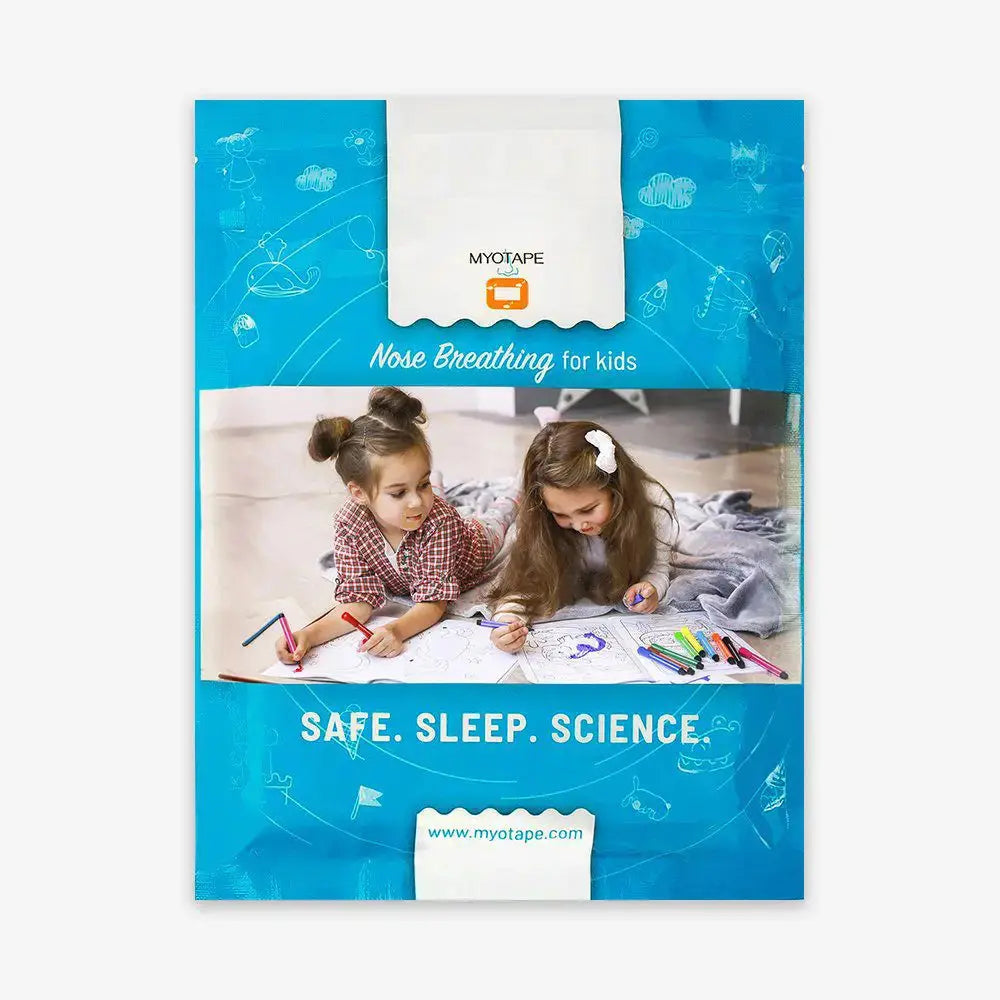
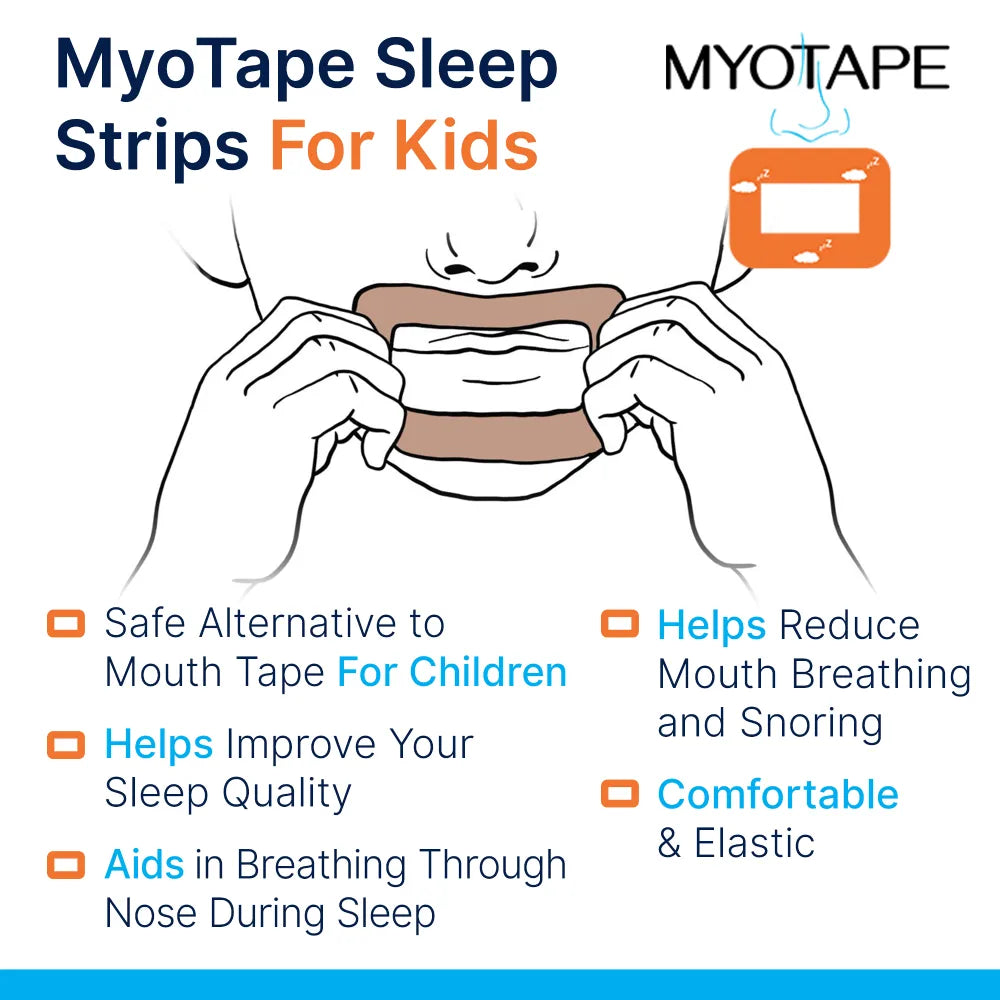
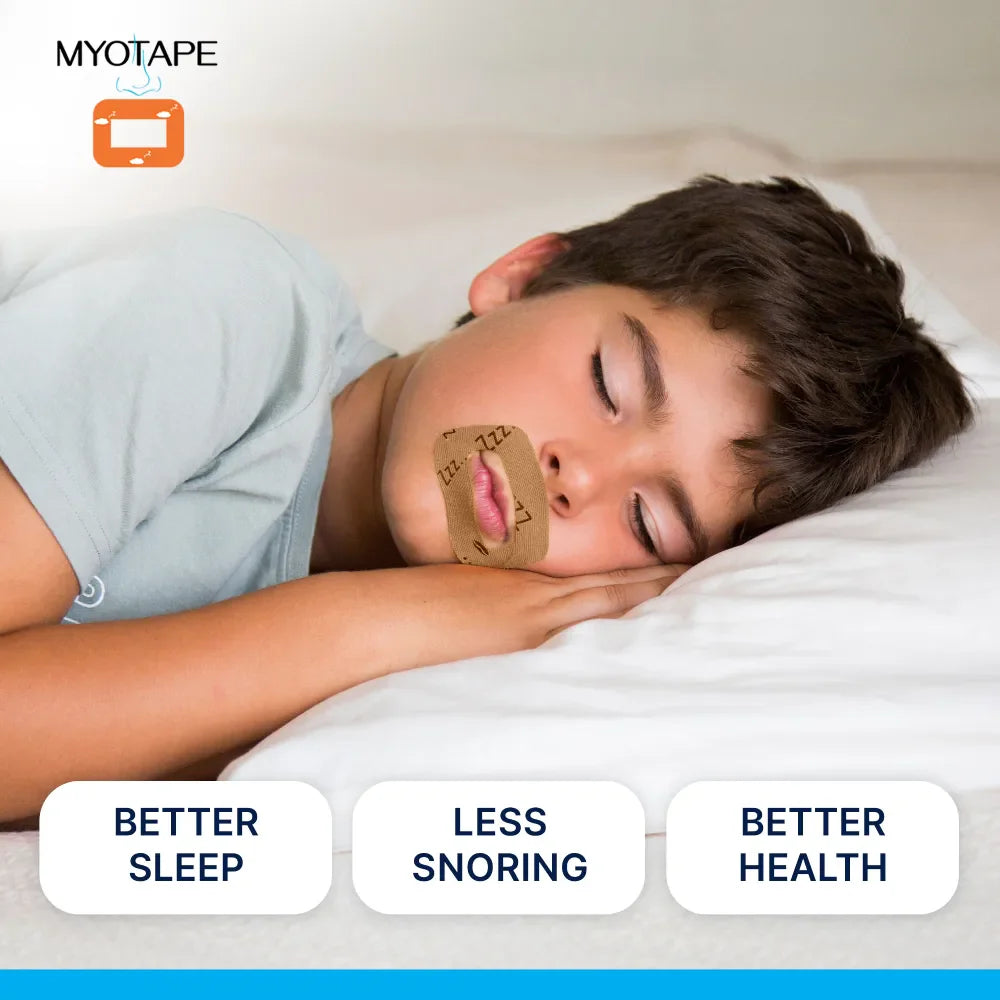
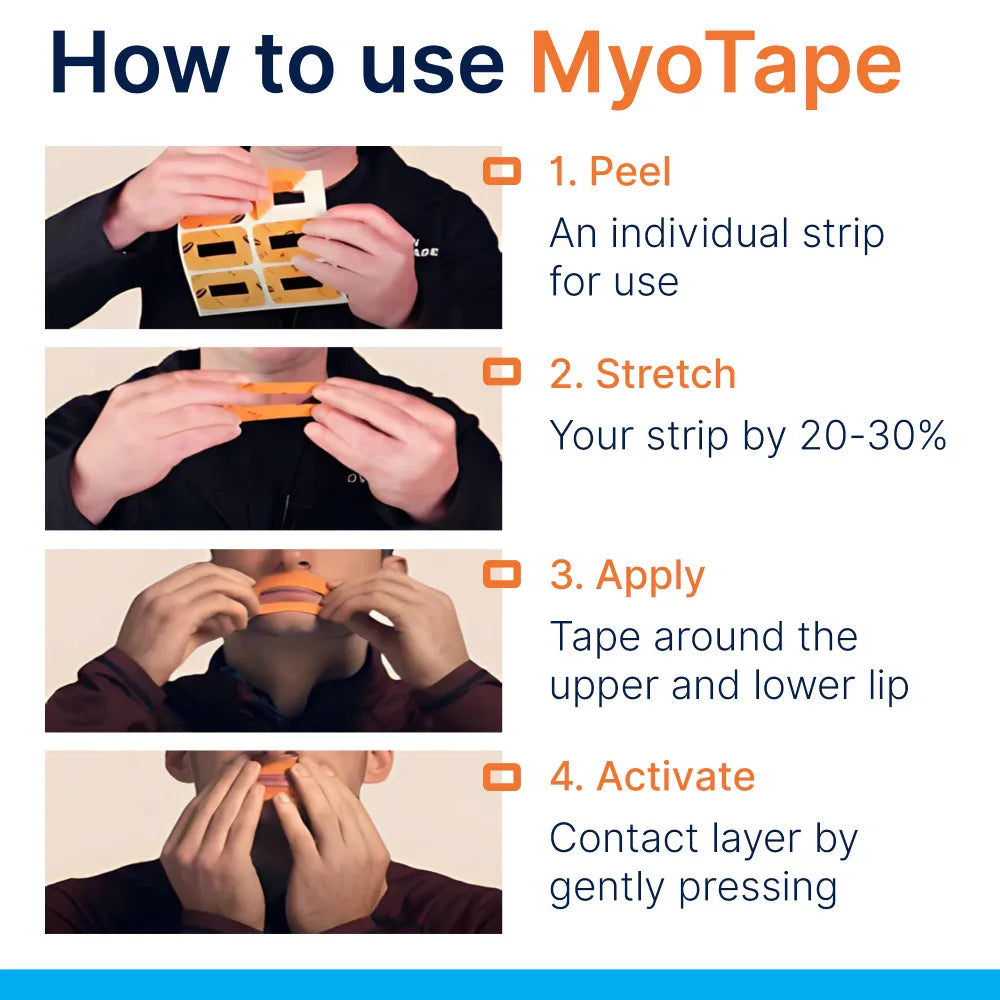
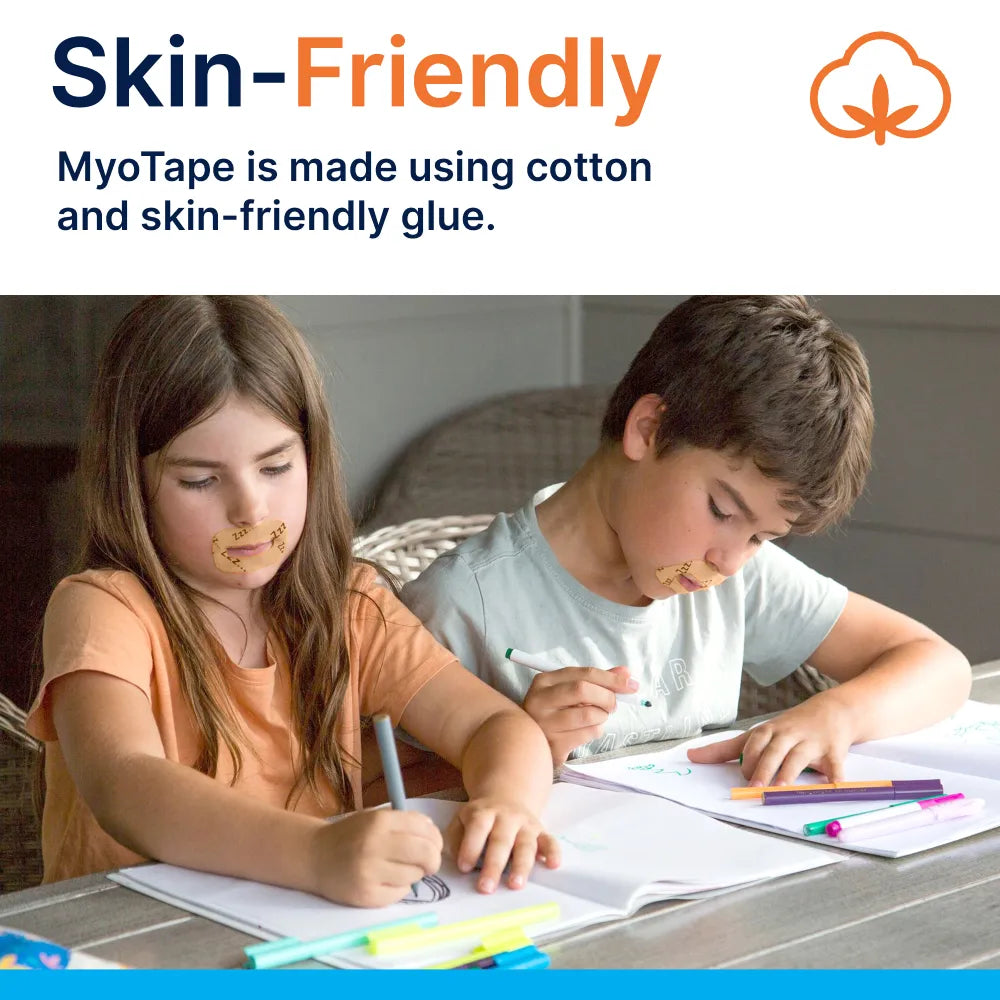










0 comments